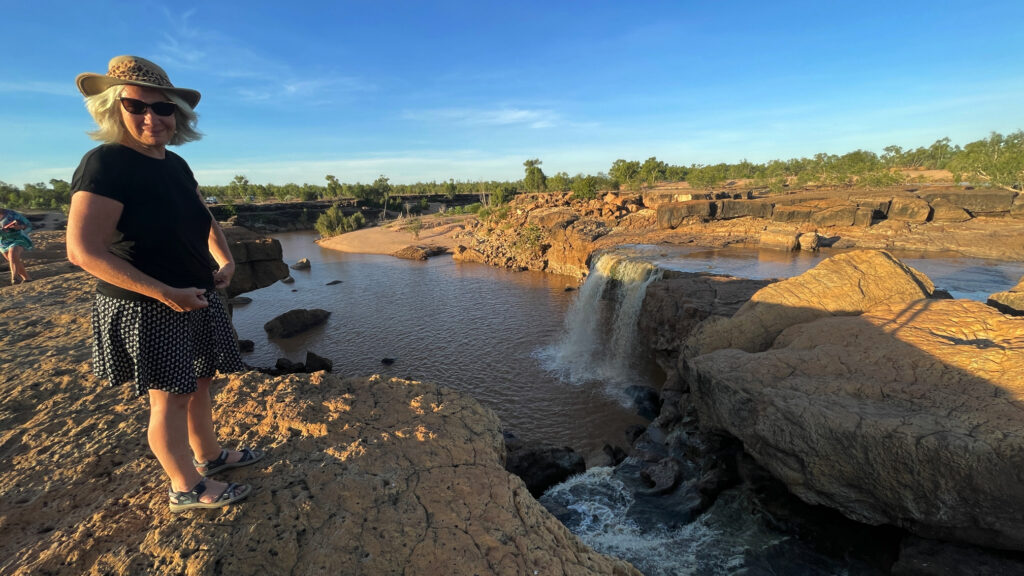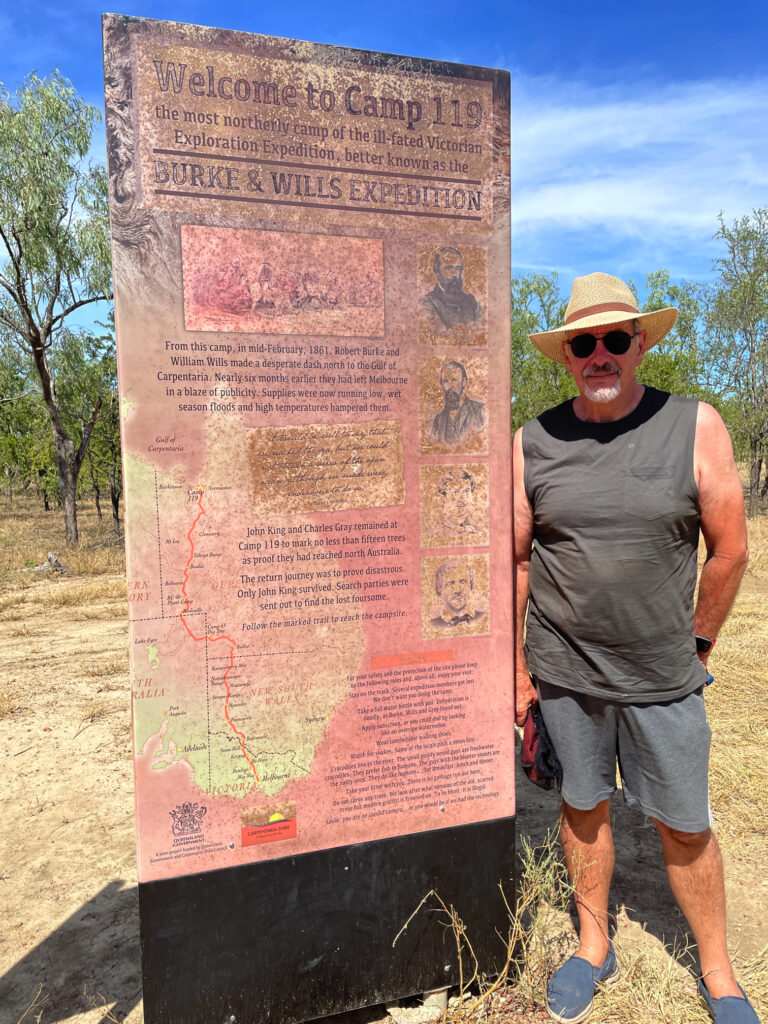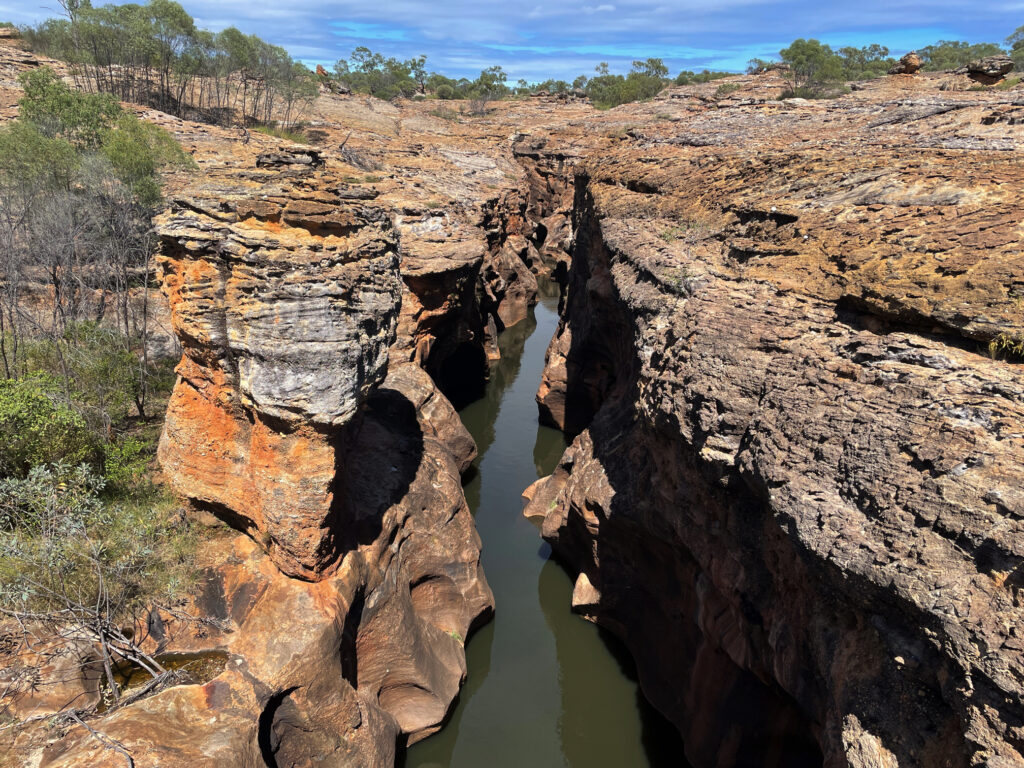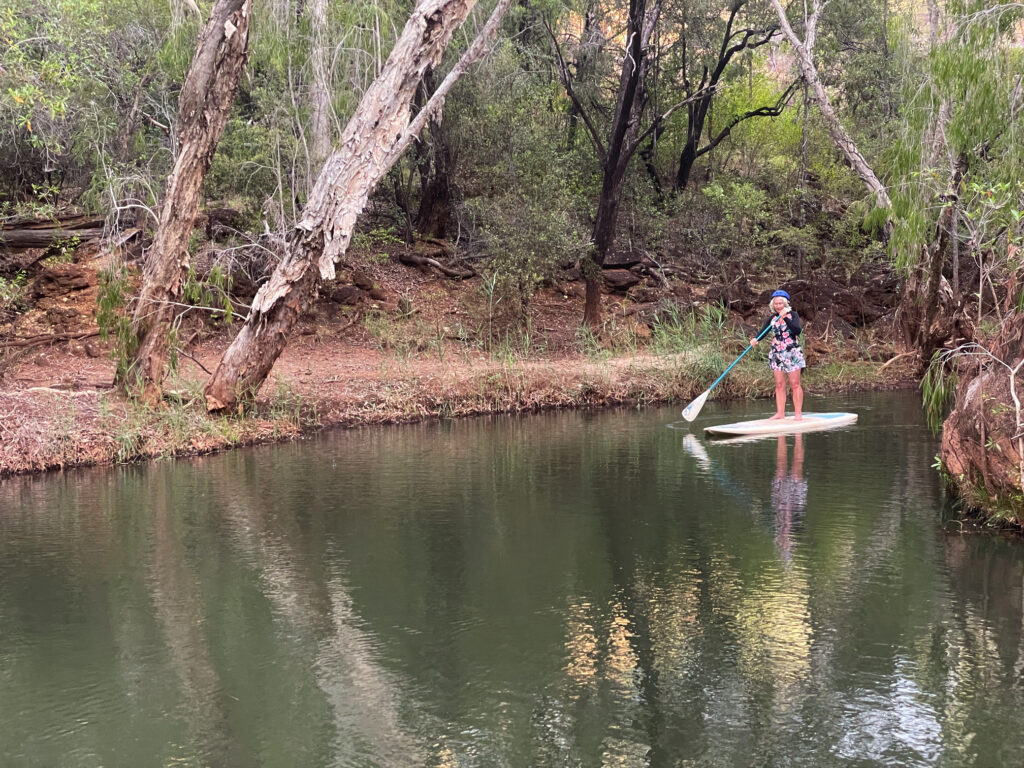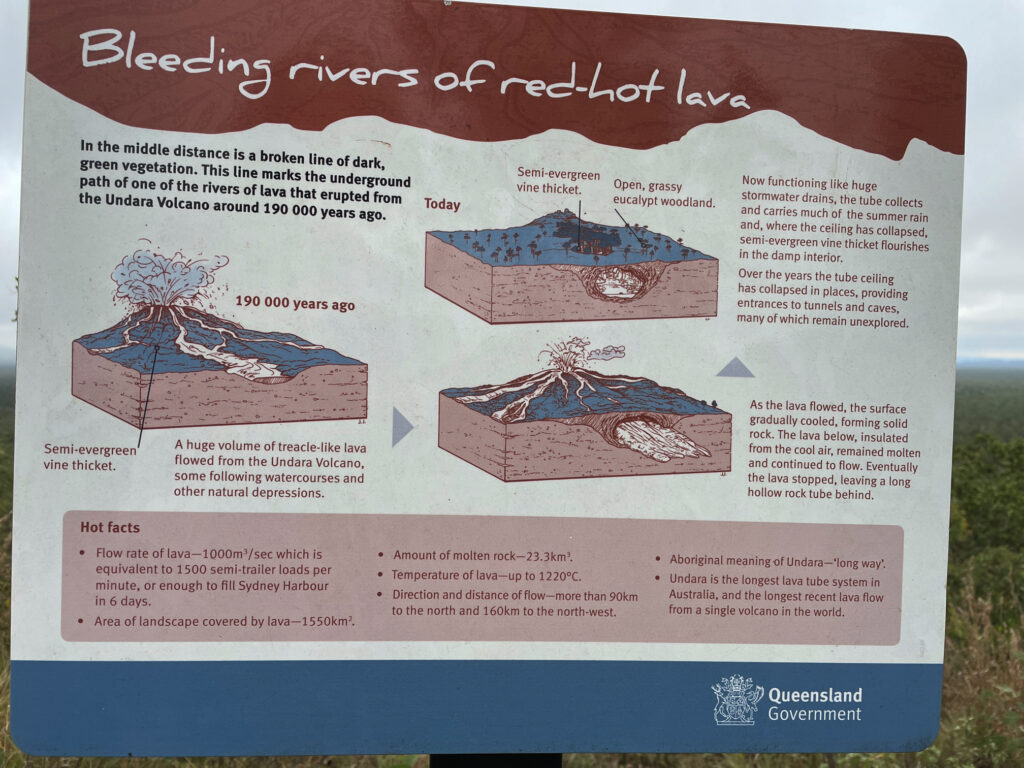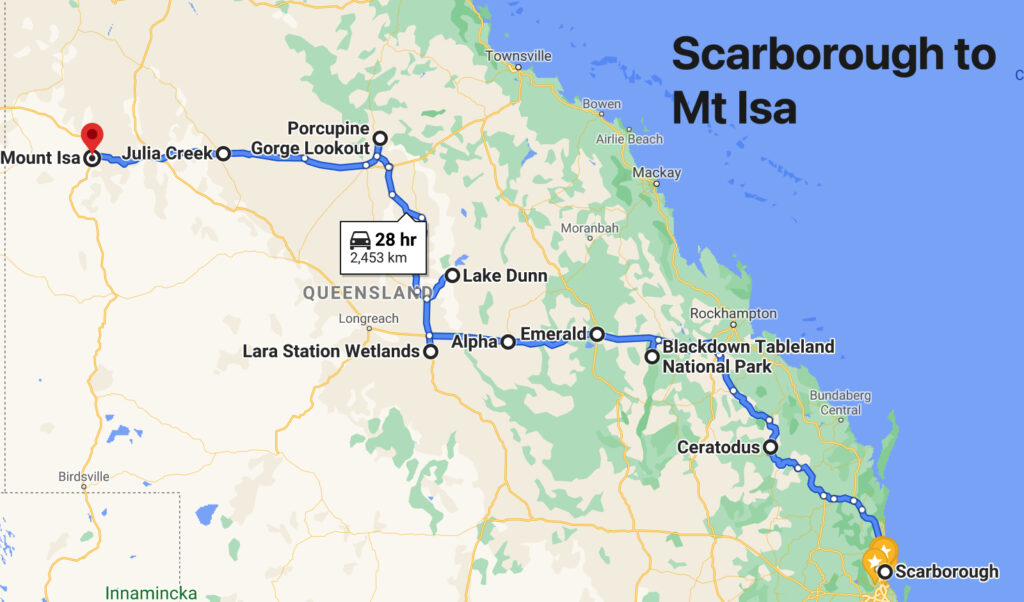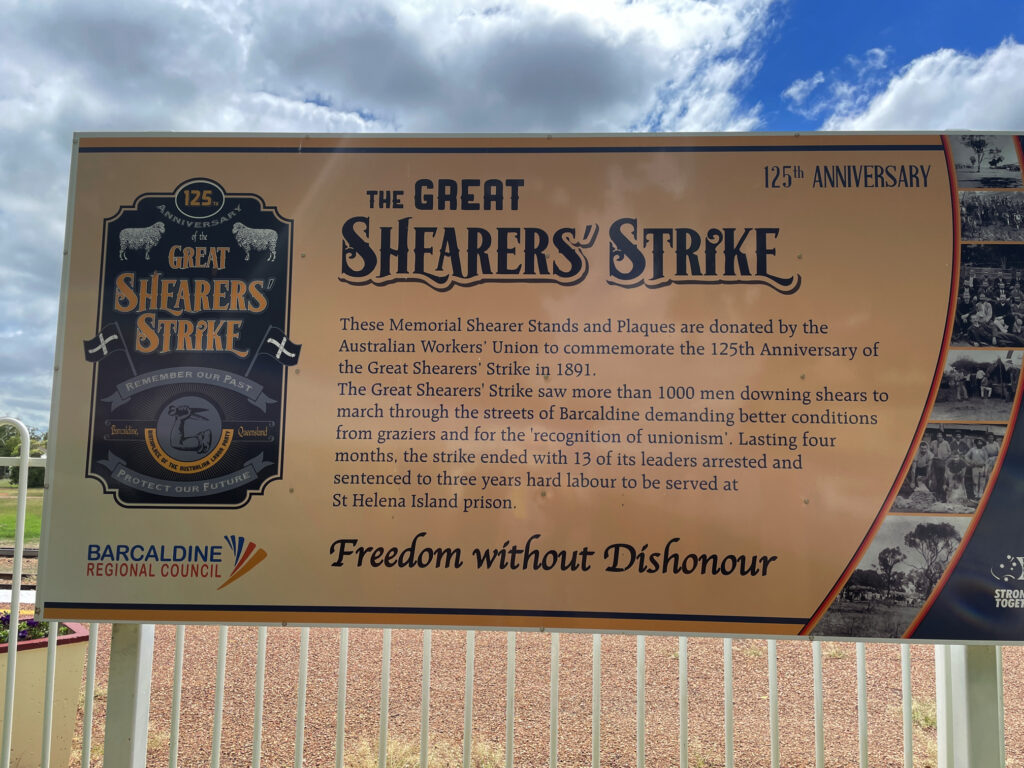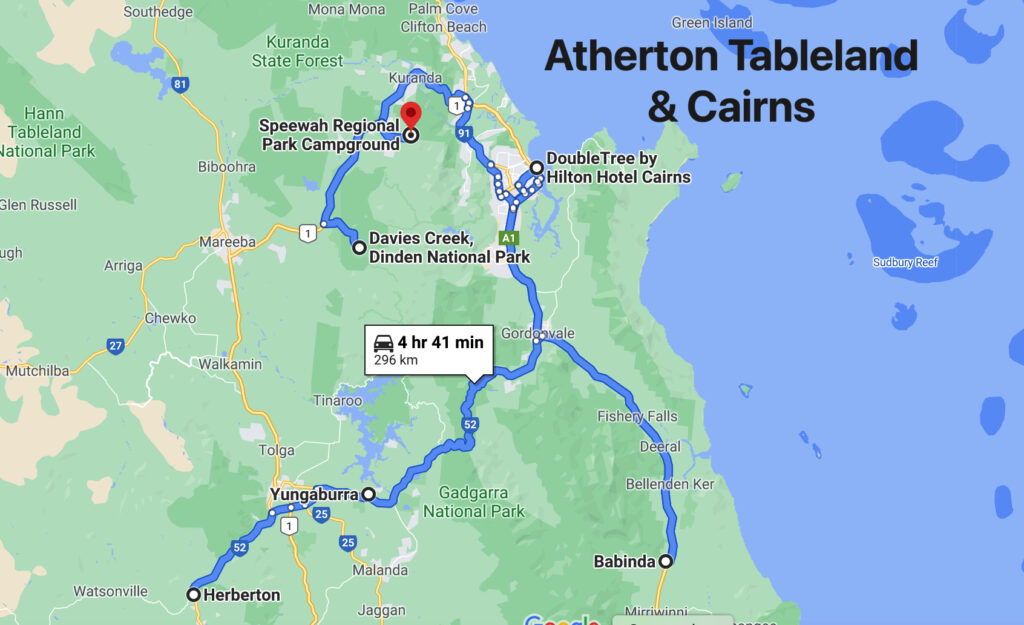
28th April – 7th May
We leave ‘the West’ now for the Atherton Tableland, but not before a dip in the hot mineral waters of Innot Springs. The water leaves the ground here at around 75°C. At the park there are 6 pools each with a controlled temperature ranging from cool to so hot just a few minutes in it is long enough! We moved between two medium temperature pools having a lovely rejuvenating soak.
With wrinkly skin we left the pools to view Millstream Falls about 30km up the road. These falls are the widest single-drop falls in Australia, flowing over the end of a basalt lava flow. A walk from the car park winds down to a viewing platform where, due to the big wet season the area has experienced, the falls are spectacular.

We pass through Ravenshoe, the highest town on the Tableland to stay the night at a caravan park in Herberton. Herberton has a truly wonderful Historic Village where we spent several hours the next day. I’m not a great fan of these historic displays, but this one is not to be missed!

The countryside has changed so much within the space of a day’s drive. From the eucalypt woodland savanna we’re now in full tropical rainforests, lush rolling hills with grass so high the cattle are nearly hidden and the most beautiful tropical plants – and it’s a lot cooler. Lake Barrine is one of two crater lakes, on the Tableland, Lake Eacham being the other. These two lakes were formed around 10 – 17,000 years ago when the earth’s magma contacted the ground water creating steam which blew the top off forming a crater which subsequently filled with water.
We’d planned to kayak around Barrine, but the weather is still a bit rainy at times and lovely and cool now, so instead we walked around them both, and may have had a coffee and something sticky to eat at the Tea House on Lake Barrine.

We spent two nights at the Lakeside Caravan Park on Lake Tinnaroo and took the time to drive around visiting local attractions such as Nerada Tea Plantation, Gallo Dairy and Chocolate shop and the delightful town of Yungaburra.

However being the beginning of a long weekend and Lake Tinnaroo being a favourite for the local water skiers, jet ski owners and just generally noisy boats, we were pleased to leave.

1st May: We descended to the coast via the Gillies Highway, a Highway famous for its 263 corners and 800m elevation change in just 19km. It was built in 1925 and I’m rather proud to say my grandfather was one of the surveyors for this road. The scenery was absolutely spectacular, unfortunately the lookouts were all on the ascending side of the road making it a bit dangerous for us to pull over to take our time enjoying it.
Babinda Boulders is our destination today, but first the highly rated Josephine Falls near Mt Bartle Frere. In ‘usual’ conditions these falls provide an ideal natural waterslide – way too much water at the moment though.

The Babinda Creek is a fast-flowing creek that winds its way through huge boulders forming large pools ideal for swimming. Still a bit overcast and cool for swimming but I did wade in and enjoy the refreshing waters here.

There’s a nice-looking free camp here, but we decide to go back to Babinda where there’s a large free camp beside the river. Most memorable about this campsite is the rooster that crowed the wake-up alarm right outside my window from 4.45am for at least half an hour. I dare say I’m not the only camper who had visions of roast chicken!
2nd – 4th May: We’re now having a holiday in the middle of our trip – three nights at the Doubletree Hilton in Cairns! The hotel is fabulous, particularly the beautiful atrium with a pond with barramundi that swim through lush tropical plants. We are both impressed with Cairns – the Council has done a marvellous job with tropical plants everywhere, an excellent walkway/cycle way the length of the foreshore with sculptures, parks, impressive playgrounds and exercise stations and a beautiful swimming lagoon.
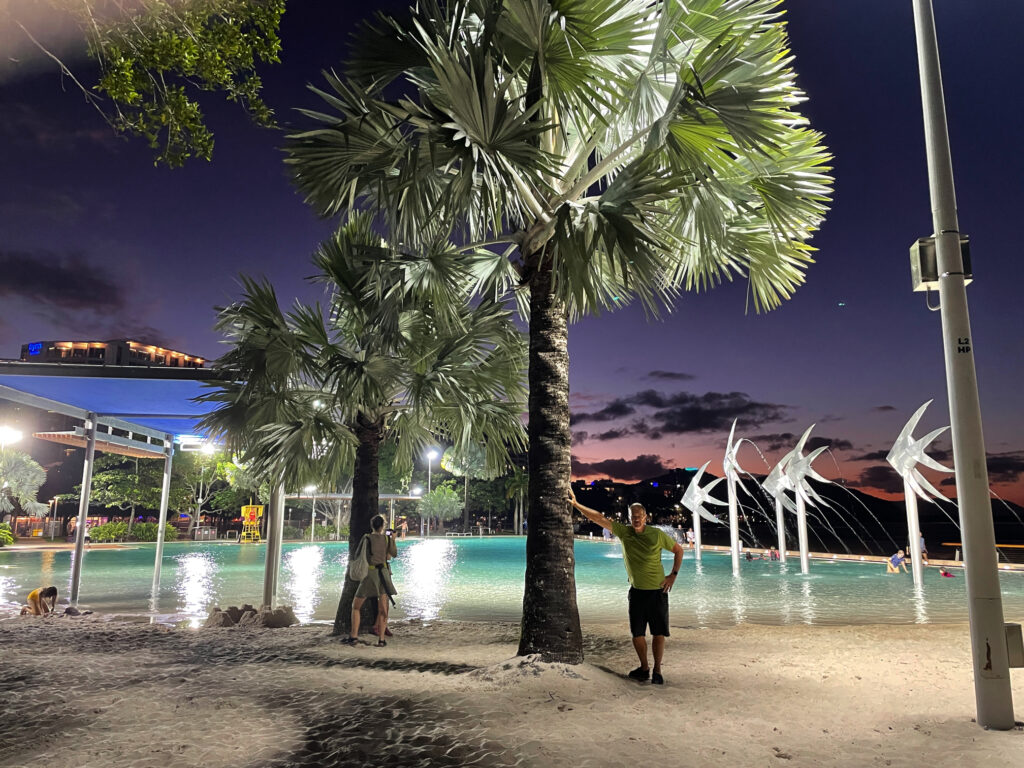
On our last day we rode our bikes to the Botanic Gardens where the local and exotic tropical plants stunned us with their lushness and colours and variety. It’s such a large Gardens we’re pleased we rode our bikes, covering several kilometres within the gardens to visit all the areas.

We also had dinner with Philippa and Andrew, new friends we first met at Boodjamulla, then again in Karumba. And when we weren’t doing all these activities we swam in the hotel pool and spa, lazed poolside reading, or had a few drinks at the outdoor bar and restaurant.

5-7th May
We return to Atherton Tableland this time via the Kuranda Highway. On previous visits we’ve come up to Kuranda on the cable car and the train – both highly recommended, but this is the first time we’ve driven. Not quite as spectacular, but still a fabulous drive.
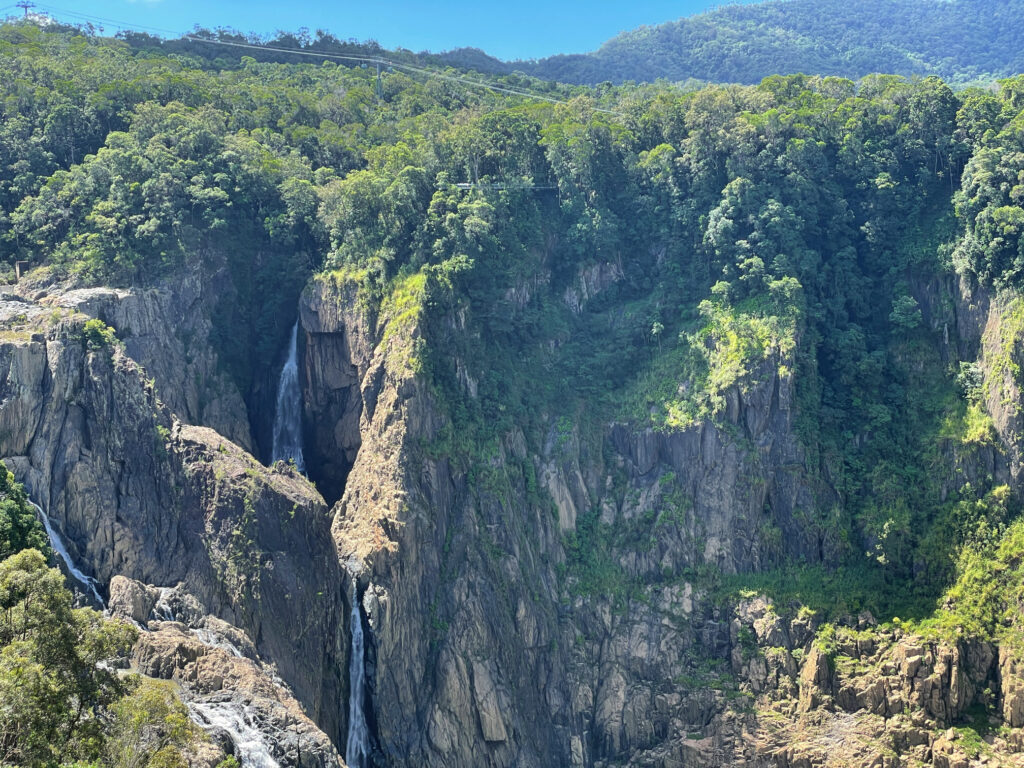
Kuranda … disappointing .. lots of shops closed and the feel was mass-produced tourist trinkets. After wandering around for a while, trying to give the place a chance, we drove out to Barron Falls Lookout. Wow those falls are amazing. A kilometre-long walkway took us to a couple of lookouts over the falls and down the range to the coast. Interestingly the river above the falls was dammed for hydroelectricity for a while in the early 20th century.

Moving on from here our campsite tonight turned out to be one of the best we’ve ever stayed in! Upper Davies Creek campsite in Dinden NP, site#2. We seemed to climb a long way on an unsealed road before reaching the campsite, but 4×4 only needed at the very end to get into the campsite. The next nearest camp was a long way away (and no one there anyway). The creek came down a small waterfall then over rapids before forming a large pool right beside where we were camped, leaving the pool via more rapids. It was stunningly beautiful.

A thoughtful previous camper left wood beside the fire pit where we cooked our dinner. Swimming was chilly and did involve a lot of resolve to fully submerge. Unfortunately we’d only booked one night here, but we stayed until quite late in the afternoon making the most of it before leaving.

Speewah campsite in Barron Gorge NP was also lovely – only 3 campsites, each on a well-formed pad with large grassy areas and a patch of natural bush between each site. On our first full day we set off to do some walking. Phew … that was more than we’d bargained for. The walk was through thick rainforest which was magnificent and a treat to be immersed in.

However it has rained a lot here recently and in quite a few places the track was in very poor repair, with many fallen trees and their multiple branches to scramble through. In one section a wide fire trail we were following was so badly washed out and eroded it’d be impossible to drive on it. There were 5 water crossings, two where we needed to wade through, rather than rock-hop over.
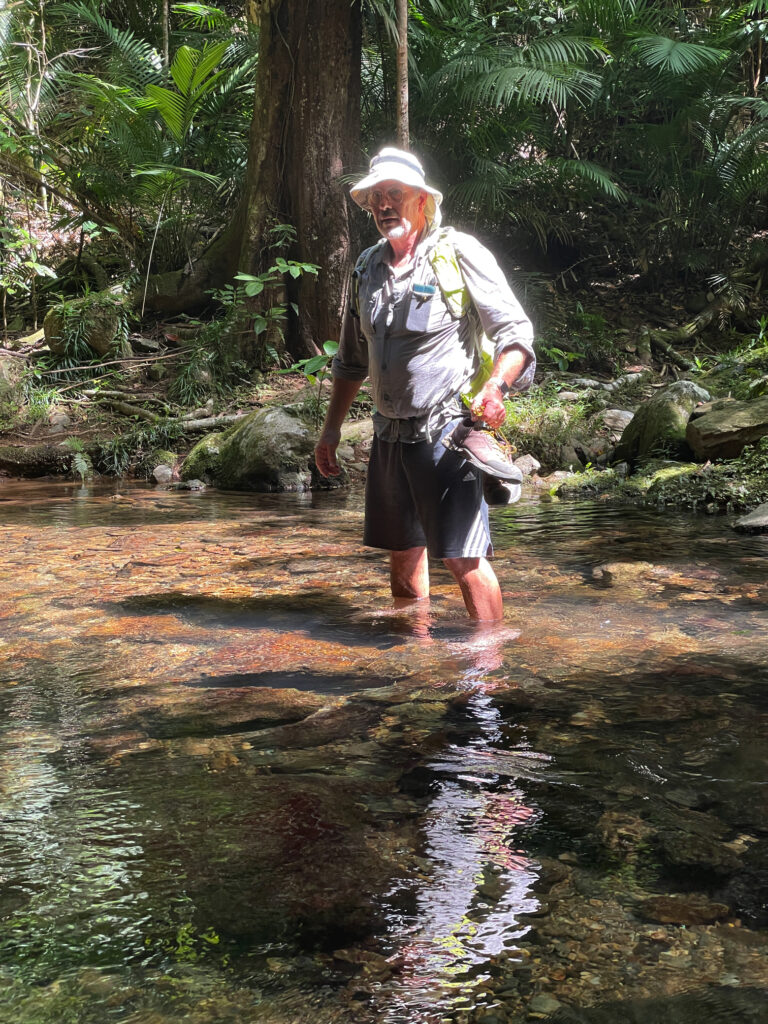
But of greatest difficulty were the many steep ascents and descents, not short ones either! Along the way Steve managed to pick up a few leeches and get caught in lawyer vine enough to draw blood, and I came face-to-face with many golden orb spiders whose massive sticky webs were built right across the track. These spiders from toe to toe would have been as big as my hand.

Our GPS told us we walked for 5.5 hours over 18km – I don’t know it was that far, but it was a tough walk however far it was. A chilly shower on return restored feeling to weary bodies!






